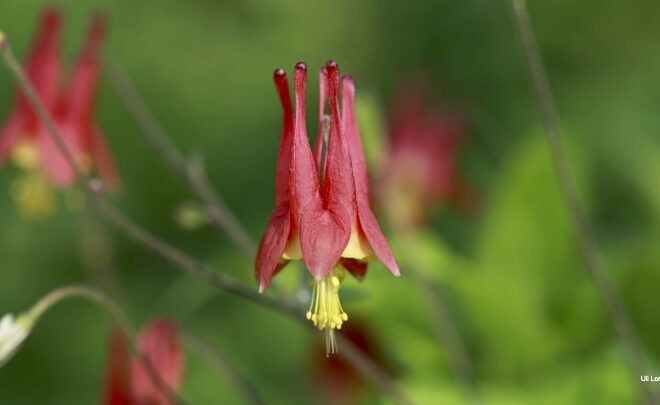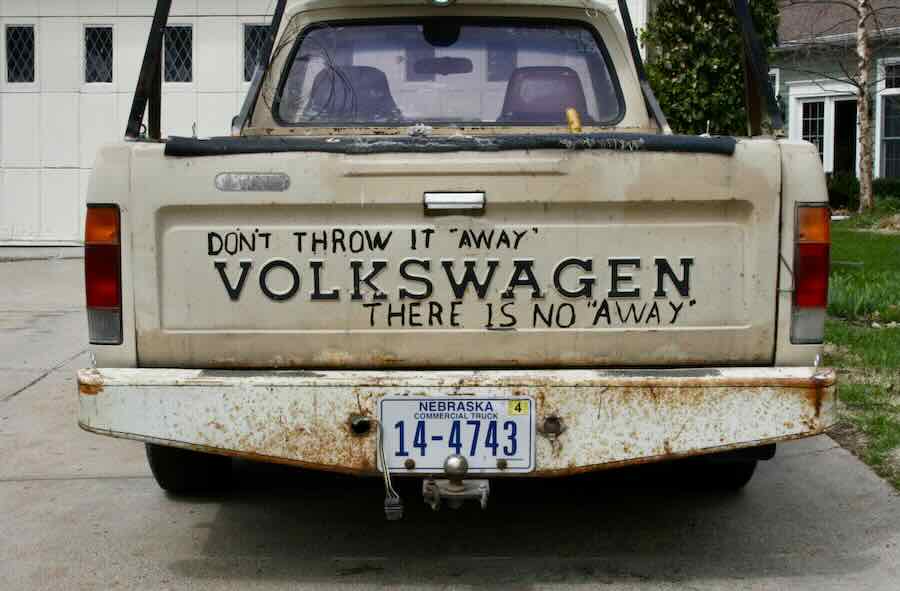
easy does it: adaptive reuse yields regenerative landscapes, with apiary studio
[ad_1]
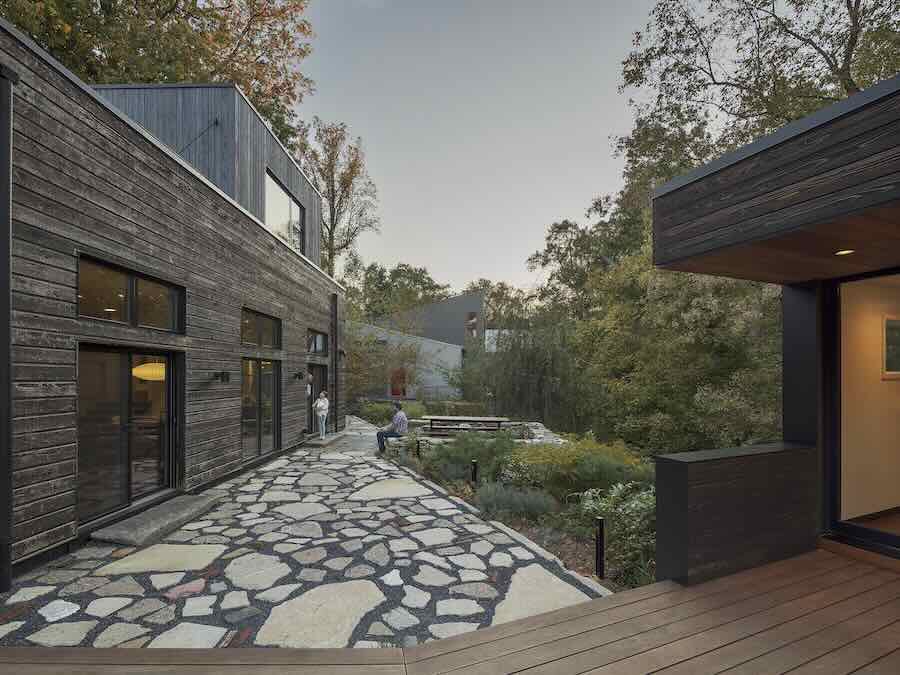
 LANDSCAPE DESIGN is also part of the inexperienced commerce, nonetheless usually rethinking a yard space (or making a yard the place there didn’t was one) can create a lot of very un-green waste supplies—very true when you’re designing in an metropolis setting.
LANDSCAPE DESIGN is also part of the inexperienced commerce, nonetheless usually rethinking a yard space (or making a yard the place there didn’t was one) can create a lot of very un-green waste supplies—very true when you’re designing in an metropolis setting.
Instantly’s guests, the principals of Apiary Studio in Philadelphia and updated best-in-show winners of the Philadelphia Flower Current, creatively uncover new lives for every scrap of cloth they will—certain, even concrete rubble, pretty than sending it to the landfill—the entire whereas making pretty, purposeful outdoors yard areas for his or her purchasers.
What are their secrets and techniques and strategies of being transformational and environmentally delicate on the an identical time that we’ll all be taught from?
Hans Hesselein and Martha Keen are the leaders behind Apiary Studio, a design-build panorama company specializing in regenerative landscapes, each one-of-a-kind, really, nonetheless all based mostly totally on a set of distinctive design tenets they outlined in our dialog. (Above, Apiary’s upcycled paving connects a home and studio by the Philadelphia company C2 Construction; Sam Oberter image.)
Study alongside as you take heed to the May 20, 2024 model of my public-radio current and podcast using the participant beneath. It’s possible you’ll subscribe to all future editions on Apple Podcasts (iTunes) or Spotify (and browse my archive of podcasts proper right here).

easy does it when landscaping, with apiary studio
Margaret Roach: You’re not out digging, not out working within the current day, huh?
Martha Keen: No, we’re actually tabled within the current day with a rain day, so it’s pretty serendipitous timing that we had this interview scheduled with you.
Margaret: Good. So only a bit backstory. We met this yr by means of frequent yard associates, they normally had watched a chat you gave at a conference. After which I watched the replay at their suggestion, and I found myself scribbling down ideas like mad, because of so a lot of the principles that drive your designs are new to me. And I found additional after we labored on a “New York Events” yard column collectively after that.
So I ponder if for the listeners, you would possibly kind of give a bit background of what’s “regenerative landscaping,” if we are going to title the model you are employed in that, and type of a quick backstory of the way in which you found your self expressing your self on this methodology pretty than in a additional standard, acquainted yard vogue.
Hans Hesselein: I would say regenerative landscaping to me most likely means doing points that are environmentally sustainable, that are good for the Earth, good for wildlife, good for folk. We don’t primarily take into account our work by means of labels, nonetheless regenerative seems like an excellent time interval to utilize, I really feel. It’s optimistic and it, I really feel, seems to indicate intuitively merely doing one factor that heals the planet pretty than harms it.
Martha: And I really feel moreover working with optimism. In present yr, I’ve started to primarily embrace that feeling: Doing one factor that is conscious of the kind of dread or guilt that every one of us face in mild of how shortly the native climate seems to be altering, and as well as doing one factor with the onus that I really feel everybody who works inside the inexperienced commerce feels to do no harm or do a lot much less harm, because of it’s a bit little bit of an open secret that some standard panorama practices are extraordinarily wasteful.
Margaret: Correct. And significantly as I said inside the introduction, inside the metropolis environment the place a lot of your work takes place. I indicate, there’s a lot of troublesome provides already, correct, on web site. You get there, I suppose, and in addition you’re going to do a session with a possible client, and what are you presumably seeing? In case you occur to’re in a spot like Philadelphia, or when you occur to’re in New York Metropolis, and even in a lot of suburban environments, you’re most likely seeing a lot of pavement and plenty of “soil” that’s left… soil in quotes as you’ve taught me, Hans [laughter]. Soil left over from improvement and who’s conscious of what by the years. Correct? I indicate, it’s not idyllic. It’s not a pristine pure setting, a lot of events.
Hans: That’s true. Not one of many web sites that we work on in Philadelphia are undisturbed, nonetheless there’s positively a degree of disturbance. There are some excellent, pretty properties that don’t have a lot of troublesome conditions. Nevertheless then our favorite initiatives are kind of deeper inside the coronary coronary heart of Philadelphia and typically comprise a lot of really degraded conditions, I would say. So it’s commonplace for us to succeed in at a enterprise web site—whether or not or not it’s a home-owner or a developer enterprise or some small institution in Philadelphia—it is commonplace for us to find an internet site that is absolutely paved, entrance yard, yard, facet yard and establishing. And that’s always a troublesome state of affairs to create a yard in.
And usually after we uncover enterprise web sites that are open, that are not absolutely paved, the soils are terribly disturbed and characterised by quite a lot of funky metropolis fill, bricks, chunks of concrete, rubble and trash of assorted types. And we love the issue of constructing gardens and selecting provides, and considerably plant palettes, that work with these current soils pretty than digging them up, throwing them away and bringing in cleaner, additional standard pure rich and good soil.
Margaret: Correct. Because of that mainly is a lot of us. We anticipate, oh, I’m going to make a yard. Properly, I’m going to erase all of the items that’s there and I’m going to herald, fill inside the clear, irrespective of it is: the vegetation, the soil, all of the items. And in addition you don’t strive the sort of clear slate type of an element. And presumably it’s obvious to of us, nonetheless inform us the rationale. I indicate, I had certainly not really thought until I listened to your presentation after which subsequently talked to you, I’d certainly not really fastidiously thought-about all of that kind of hardscape that can get torn up and redone in so many landscaping initiatives in every single place within the nation and the world frequently when it’s attempting worn out or irrespective of, or for irrespective of motive. And the place does it go and what happens to it? I indicate, there’s an infinite worth to that, not merely in {{dollars}}, is it?
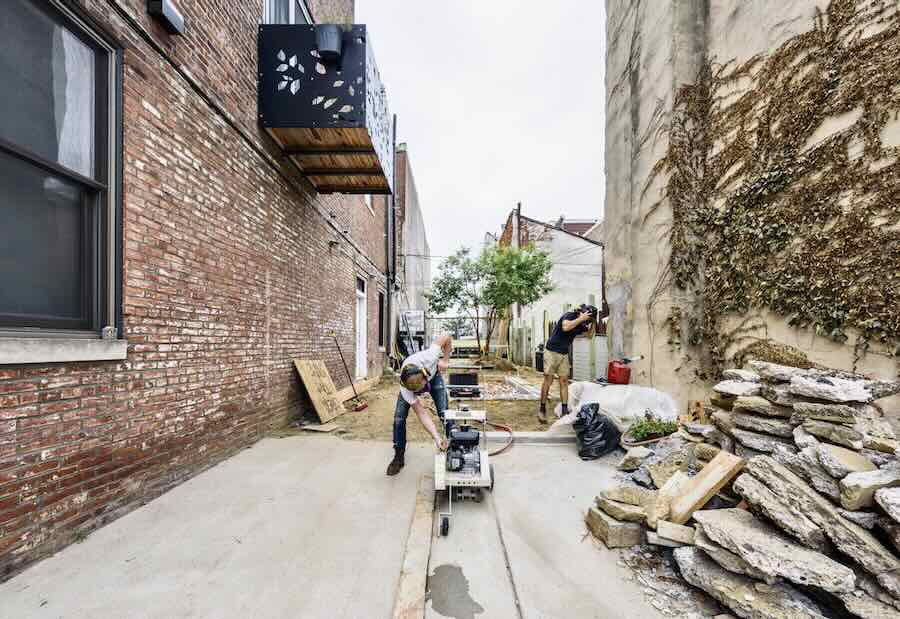
 Hans: That’s correct. I really feel together with defending soils on web site and adjusting our plant palette to fulfill the soil conditions, we moreover uncover a lot of concrete. It feels very uncommon to us to return onto an internet site, tear up a bunch of paving, throw it away and herald new paving. And so we’ve been trying to experiment and uncover methods through which we are going to make ugly concrete into one factor that’s, if not pretty, in any case tolerable for our purchasers. [Above, sawcutting old pavements and stockpiling pieces for reuse; Jaime Alvarez photo.]
Hans: That’s correct. I really feel together with defending soils on web site and adjusting our plant palette to fulfill the soil conditions, we moreover uncover a lot of concrete. It feels very uncommon to us to return onto an internet site, tear up a bunch of paving, throw it away and herald new paving. And so we’ve been trying to experiment and uncover methods through which we are going to make ugly concrete into one factor that’s, if not pretty, in any case tolerable for our purchasers. [Above, sawcutting old pavements and stockpiling pieces for reuse; Jaime Alvarez photo.]
Martha: Yeah, and it just so happens that this type of work—like using recycled provides, using provides that may in another case be thrown into the trash—indirectly really is suited to the town character of Philadelphia the place there’s a spectrum of vernacular, I would say, a couple of of which is stately, historic, outdated and beautifully intact as historic buildings. Nevertheless others which are in a single kind or one different of merely decay, and there’s magnificence in that as properly. And kind of reappropriating a couple of of that decay, and reworking it into one factor intentional, well-crafted, well-executed, really does kind of seamlessly combine into the character of the city the place we’re dwelling and dealing.
Margaret: Correct. So as we talked about inside the “Events” article, a lot of what you might do with most of these, I really feel you consult with them as “surgical extractions”—if as you come to a property that has pavement in every single place and in addition it’s essential to make yard beds, you might extract a couple of of that hardscape, nonetheless you don’t cart it off to the landfill, you pile it up and sort of give it some thought, as you outlined to me, give it some thought once you’re engaged on all of the items else. Think about what might it become. And in addition you’ve been experimenting with and making a experience for making these just about mosaics of paving out of the remnants. In any other case you uncover cobblestones and bricks and who’s conscious of what inside the rubble. And as soon as extra, you pile them up and in addition you might make a wall. It’s merely this very handcrafted look, and but it surely doesn’t ought to look messy, does it? I really feel it’s undoubtedly developed, the facility to work with this rubble [laughter] has undoubtedly developed from job to job, hasn’t it?
Hans: Yeah. I really feel certain, our vogue is evolving, it’s altering. As we work additional on initiatives, we get to observe our craft, be taught lessons, and decide what seems best. Nevertheless yeah, we oftentimes will start with an internet site that’s absolutely paved over. And the trick there, or the issue I would say, is that we’ve now purchasers who’ve web sites that are absolutely paved, they normally usually don’t want that state of affairs. That’s not fascinating for them. However, the purchasers that we’re working with and for don’t normally have the budgets to remove all of the items. So that’s one constraint that helps drive our creative design course of, is that the purchasers we’ve now cannot afford the proper state of affairs. And so we’ve needed to decide methods through which we are going to, as we’re saying, surgically extract various the concrete and make what stays participating.
And so the 1st step on this course of is fastidiously delineating which areas will possible be yard mattress, which areas will keep that current pavement state of affairs, and to very fastidiously and precisely saw-cut and take away sections of this pavement to create new yard beds. What makes that work and what makes that participating is the craft and precision with which you observed and take away, after which create a model new edge to that paving state of affairs.
After which as quickly as these provides are extracted, we’ll usually reuse them on that exact same web site as a model new paver stepping stones by means of the yard or a retaining wall or one factor. Or we’ll stockpile that supplies in our small yard and reserve it for yet another enterprise, the place we herald new paving provides. And after we’re creating what you title these mosaic paving patterns that use concrete or brick or cobblestone, and usually a mix of all these things, we’ve now wanted to try to find strategies to make these provides look participating. Because of the prospect, the pitfall, with using trash as a establishing supplies is you don’t want to search out your self making a yard that seems like trash reused [laughter] or it seems like some D.I.Y. enterprise.
We’re professionals and we’re trying to ship to our purchasers an skilled attempting panorama. And that’s a distinction, I really feel, that’s crucial. Nevertheless a home-owner D.I.Y. panorama may very well be very charming, and I really feel there’s a lot of price and profit to that. Nevertheless as an skilled, that’s not what we’re trying to ship for folk.

 Martha: It’s moreover our intention to do that type of work properly ample that it’s as compelling as a mannequin new bluestone patio or brick patio. And if not as compelling, presumably additional compelling, because of there are the added benefits of the way in which through which that it ameliorates various the waste, significantly of masonry merchandise and concrete, which exist in additional. [Above, old bricks and other materials are repurposed into new paving by Apiary; Jaime Alvarez photo.]
Martha: It’s moreover our intention to do that type of work properly ample that it’s as compelling as a mannequin new bluestone patio or brick patio. And if not as compelling, presumably additional compelling, because of there are the added benefits of the way in which through which that it ameliorates various the waste, significantly of masonry merchandise and concrete, which exist in additional. [Above, old bricks and other materials are repurposed into new paving by Apiary; Jaime Alvarez photo.]
Margaret: Properly, and I like a couple of of your group type of mottos or slogans or tenets, I assume. Actually one in all them that I really feel bought right here out of your childhood, Martha, was “there isn’t any such factor as a away.” Maybe you would possibly make clear that because of gardening, whether or not or not we’re doing hardscape work, akin to you’re talking about, or just all the bags of stuff and the plastic pots, and there’s a lot of waste. There’s a lot of waste that we’ve now to bear in mind about. And so the considered “there isn’t any such factor as a away” is one factor that mainly, I’ve been contemplating a lot about it since we met. So inform us the place that bought right here from, what that means.

 Martha: Yeah. I am always utterly completely satisfied to position this little adage out on this planet. Primarily, after I used to be rising up, there was a family buddy of ours who was a doctor inside the metropolis the place I grew up, in addition to he drove an outdated VW select up that was most likely three a very long time older than the yr we’ve been dwelling in. And scribbled on the once more in Sharpie was this saying that Dr. Kingsley had coined, which is, “Don’t throw it away, there isn’t any such factor as a away.” [Photo by Patricia Kingsley.]
Martha: Yeah. I am always utterly completely satisfied to position this little adage out on this planet. Primarily, after I used to be rising up, there was a family buddy of ours who was a doctor inside the metropolis the place I grew up, in addition to he drove an outdated VW select up that was most likely three a very long time older than the yr we’ve been dwelling in. And scribbled on the once more in Sharpie was this saying that Dr. Kingsley had coined, which is, “Don’t throw it away, there isn’t any such factor as a away.” [Photo by Patricia Kingsley.]
And that’s one factor that my family has volleyed spherical endlessly after we encountered… Now we have been kind of a thrifty family, nonetheless that’s one factor that we completely embraced. And as Hans and I started to primarily dwelling in on what our ethos is as a corporation, what our manifesto is as a enterprise, as we started to mature into additional of an identification and to have repeatable practices that the enterprise does, that’s one which he and I adopted as properly, principally with respect to hardscaping.
A wide range of gardener—I’m accountable of this—a lot of gardeners, we’ve now biases, and after we take into account a panorama, we fixate on the vegetation. Nevertheless because it’s, when you’re in a landscaping agency at large that’s approaching a whole web site, vegetation are presumably 10 p.c of the enterprise. It is essential to be concerned with drainage, utilities, underground, patios, fencing, partitions, dah, dah, dah. And we’re all properly acquainted with composting, with mulching our leaves inside the fall as a substitute of bagging them up and blowing them away or whatever the case is also. Nevertheless there is a whole gamut of various provides that get utilized in a panorama, and it’s after I used to be lastly confronting these each single day, working as a landscaper at large, not merely as a high-quality gardener, that “there isn’t any such factor as a away” really bought right here to the ground as a tagline for our agency that is related to solely about every single day inside the lifetime of our work.
Margaret: Positive, I really feel so. So presumably we’ll communicate a bit bit regarding the vegetation. And one issue merely regarding the soil, Hans, you talked about regarding the soils, and some of them, as soon as extra, you utilize it in quotes because of various the places, the soil is usually a mess. Nevertheless you guys, if a client needs a vegetable yard or when you occur to’re doing containers and so forth, you are using latest soil, some type of a novel medium, not the native soil that’s there. Nevertheless normally speaking, you’re trying to match, as you said earlier, vegetation to this environment, these conditions, this soil. And so the place does that make you think about, like what places is in nature, or the place do you go trying to find your inspiration for vegetation?
Hans: Thanks for declaring that we don’t use poison soil. We’re not creating a lot of vegetable gardens for our purchasers, nonetheless after we do, certain, you’re correct. We herald excellent clear, amended compost-rich soil, and we saved the junk soil for the ornamental gardens. So the soils that we uncover are typically full of gravel, rubble. They’re very quote-unquote “mineral rich,” I would say. And sometimes very alkaline because of there’s a lot of lime concrete waste in them. And so we’ve now tried to consider, unscientifically I would admit, what types of pure environments can we mimic and be taught from, as you recognized? And we take into account presumably type of limestone-rich areas, type of mountainsides, the Mediterranean, normally places which have sharp drainage that the soils are additional leaning alkaline, and the vegetation can cope with very, very low nutritional vitamins.
Martha: Along with low irrigation, low water.
Hans: Yeah. Yeah. So we’re having a look at limestone bluffs, and really type of gravelly pure rock outcroppings and points like that. And we’re positively not using acid-loving vegetation, so we are going to’t really consider pine barrens, sadly. Nevertheless we use natives as rather a lot as attainable, and actually a lot of prairie vegetation and points from the place Martha is native to, Nebraska, appeared to do comparatively properly, like Echinacea and points like that.
Martha: Yeah. Actually the place I grew up, the soil is certainly very alkaline. I don’t know the extent of that sort of soil, nonetheless undoubtedly the state of Nebraska is the palette of bushes that we’re able to make use of for shade bushes and highway bushes is certainly pretty restricted for that motive as properly. Yeah.
As Hans said, we’re a bit unscientific about it. And I would say that which may be a sort of frontier for us is formalizing a bit bit how we technique specifying vegetation. One different method that we do to account for attrition, if not all of the items takes, is mainly over-planting web sites. We prefer to put in vegetation really densely and really small, so we select plugs or quart pots over gallon or three-gallon measurement perennials and shrubs, and easily let points go inside the flooring youthful at an ideal time of yr and type of develop up as within the occasion that they’ve been seeded in, roughly.
Hans: Yeah. And Martha talked about attrition because of that’s positively one amongst our strategies. We don’t anticipate all of the items to dwell. I would say between 10 and 20 p.c of the vegetation we arrange or 10 to fifteen p.c.
Martha: Will not make it by means of the first yr.
Hans: Yeah. And which is okay because of we pack stuff in.
Martha: Permits us to experiment, I would say.
Hans: Yeah.
Margaret: Correct. And I really feel that’s really a superb notion. I indicate, merely the considered this outdated adage, it was like, don’t battle the situation or one factor. You even have taken that to the max as a result of conditions you’re normally dealing with, and akin to you’re saying, a very alkaline situation and so forth. It is essential to be affordable about what you try to plant besides, it’s essential to erase the whole place [laughter] and herald, truck in, all this new supplies and so forth. And so, yeah. Are there any favorite vegetation that you simply simply’ve just about have become signatures the least bit, or is it utterly totally different each time?
Hans: No, there’s some favorite vegetation.
Martha: There’s some signatures. I indicate, we’re Penstemon digitalis evangelists. I actually really feel like in every yard is type of like a foil, that’s a plant that its rosette is sort of evergreen, its flower vitality is tremendous, and it seeds spherical kind of merrily nonetheless not aggressively. So that’s a plant which will type of tend itself. A wide range of the web sites that we’re engaged on, we might have one repairs go to a month or presumably two repairs visits a yr. We take a fairly light-touch technique to repairs as properly. So we’ve now to depend upon vegetation that everyone knows will survive. Hans, what do it’s essential to add?
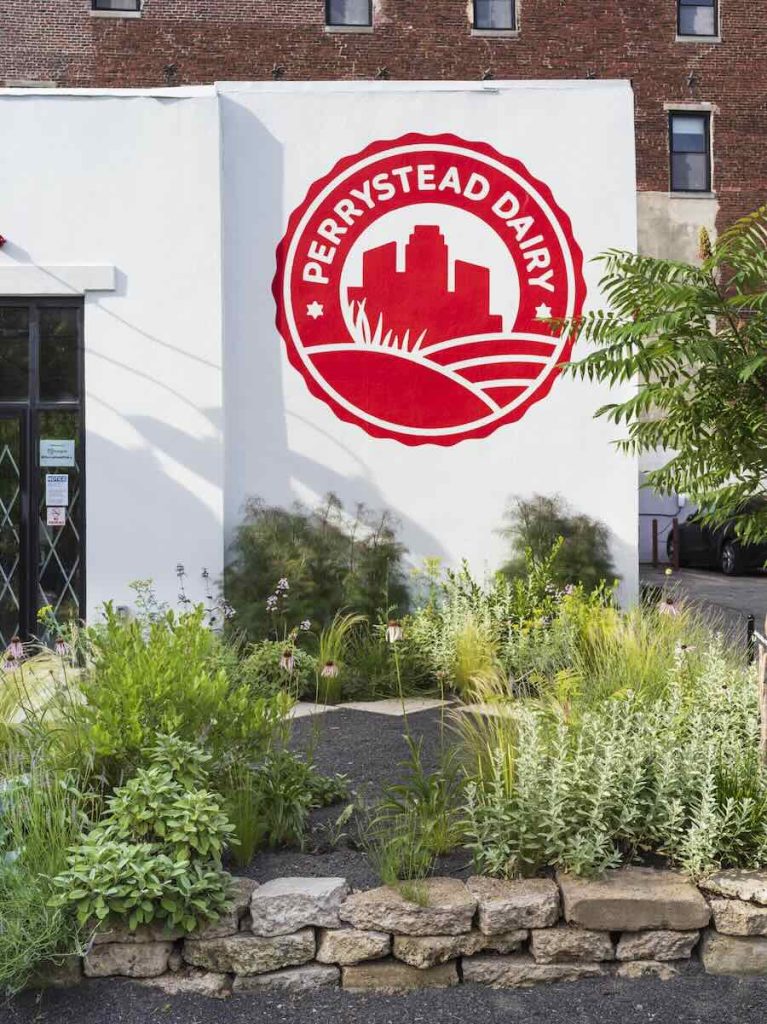
 Hans: I would say butterfly milkweed [Asclepias tuberosa] is in just about every single enterprise that we arrange for obvious pollinator causes. And as well as I would most likely title that my favorite native perennial. And it does very properly in environments that we’re working in. We use a lot of Mediterranean vegetation. We like herbs in our yard, inside the gardens that we assemble for folk, because of they’re pretty they normally’re easy for folk to really use, harvest, and incorporate into their every day lives. So it’s killing two birds with one stone: They’re every pretty they normally’re edible. [Above, herbs and other perennials in beds edged in recycled paving at an Apiary project in Philadelphia; Jaime Alvarez photo.]
Hans: I would say butterfly milkweed [Asclepias tuberosa] is in just about every single enterprise that we arrange for obvious pollinator causes. And as well as I would most likely title that my favorite native perennial. And it does very properly in environments that we’re working in. We use a lot of Mediterranean vegetation. We like herbs in our yard, inside the gardens that we assemble for folk, because of they’re pretty they normally’re easy for folk to really use, harvest, and incorporate into their every day lives. So it’s killing two birds with one stone: They’re every pretty they normally’re edible. [Above, herbs and other perennials in beds edged in recycled paving at an Apiary project in Philadelphia; Jaime Alvarez photo.]
Martha: A wide range of them have umbel varieties after they flower, too, which is barely a silhouette that I really feel is gorgeous.
Hans: And lavender, rosemary, thyme, these are in a lot of our initiatives.
Margaret: Correct. They normally come from lean environments a lot of time. I’m going to utilize that as a very free phrase, certain?
Martha: Oh yeah, utterly. Even I wouldn’t write off merely frequent yard sage. That’s a plant that I would classify as additional of a sub-shrub which will get as giant as a Fothergilla. Yard sage is unbelievable. So there are many vegetation, whether or not or not you’re concerned with meeting the conditions that the soil requires or presumably meeting a conservative funds or just accessibility—like you’ll get it at almost any farm stand or yard center. So I wouldn’t write off various the additional frequent aromatics. After which presumably you can plunk in a handful of esoteric or specialty ones, nonetheless let the additional frequent stuff be the foil. I really feel there’s nothing mistaken with that. [Below, fall in an Apiary garden that was 100 percent concrete before beds were cut out; Jamie Alvarez photo.]

 Hans: So Martha is our plant particular person. Martha, are there totally different some esoteric fascinating vegetation that we want to-
Hans: So Martha is our plant particular person. Martha, are there totally different some esoteric fascinating vegetation that we want to-
Margaret: Yeah. Are there any oddballs? I indicate, I keep in mind from the “Events” article one, the ocean kale that I moreover love very rather a lot, the Crambe maritima.
Martha: Yeah, Margaret, our mutual buddy, Drew Schuyler, instructed me that the two of you had moreover associated very early on in your friendship about Crambe maritima. Yeah, that is most likely my favorite plant. And it’s a plant that is so suited to these conditions. In case you occur to develop Crambe in rich yard compost soil, will in all probability be type of small and wish to melt, whereas when you occur to place it in a pile of rubble, it grows out of straight shingle, like on the coast of the British Isles. In case you occur to place it in a pile of rubble or one thing identical to the town conditions we address, it can get monumental, leaves that are larger than a dinner platter. So yeah, I would say if there are one plant that I would really plug, that’s fortuitously getting a lot much less esoteric, it may very well be Crambe maritima.
Margaret: Yeah. I’ve certainly not requested you. Do you’ve got a home yard? Oh-oh, he’s laughing.
Martha: We now have a home yard, nonetheless we’re dwelling and dealing in a enterprise residence correct now. We affectionately title it the Addams Family Mansion. And we’ve now a improbable vegetable yard inside the once more and 100-foot-long hoop residence. Nevertheless we’ve now made no good strides in eternal plantings however because of it may all get disrupted by the work that should be completed to the skin of our residence.
Hans: We yard. Nevertheless it absolutely’s choose it’s a enterprise web site. It’s an experiment flooring.
Martha: It’s a cobbler’s yard, I would say.
Hans: Yeah.
Margaret: That’s good though. That’s good. Tons to look ahead to.
Martha: Utterly.
Margaret: And loads of ideas you can ship dwelling to that by the years coming years.
Martha: Oh yeah, utterly. Utterly.
Margaret: That’s good. Like I said, merely the “there isn’t any such factor as a away” merely acquired me contemplating and enthusiastic concerning the footprint of concrete, and all that concrete on this planet that’s merely been piled up, who’s conscious of the place. And these are crucial concepts that we’ve now as we try to be additional delicate with Earth. So I found it very inspiring, even supposing I’m not an metropolis gardener, and thanks rather a lot.
Hans: Thanks. It’s really a pleasure and an honor to be in your current. Thanks rather a lot.
Martha: Thanks rather a lot, Margaret, and thanks for connecting all the good of us that you simply simply do to your podcast.
(All images courtesy of Apiary Studio.)
select the podcast mannequin of the current?

 MY WEEKLY public-radio current, rated a “top-5 yard podcast” by “The Guardian” newspaper inside the UK, began its fifteenth yr in March 2024. It’s produced at Robin Hood Radio, the smallest NPR station inside the nation. Concentrate domestically inside the Hudson Valley (NY)-Berkshires (MA)-Litchfield Hills (CT) Mondays at 8:30 AM Japanese, rerun at 8:30 Saturdays. Or play the May 20, 2024 current using the participant near the very best of this transcript. It’s possible you’ll subscribe to all future editions on iTunes/Apple Podcasts or Spotify (and browse my archive of podcasts proper right here).
MY WEEKLY public-radio current, rated a “top-5 yard podcast” by “The Guardian” newspaper inside the UK, began its fifteenth yr in March 2024. It’s produced at Robin Hood Radio, the smallest NPR station inside the nation. Concentrate domestically inside the Hudson Valley (NY)-Berkshires (MA)-Litchfield Hills (CT) Mondays at 8:30 AM Japanese, rerun at 8:30 Saturdays. Or play the May 20, 2024 current using the participant near the very best of this transcript. It’s possible you’ll subscribe to all future editions on iTunes/Apple Podcasts or Spotify (and browse my archive of podcasts proper right here).
[ad_2]
Provide hyperlink


